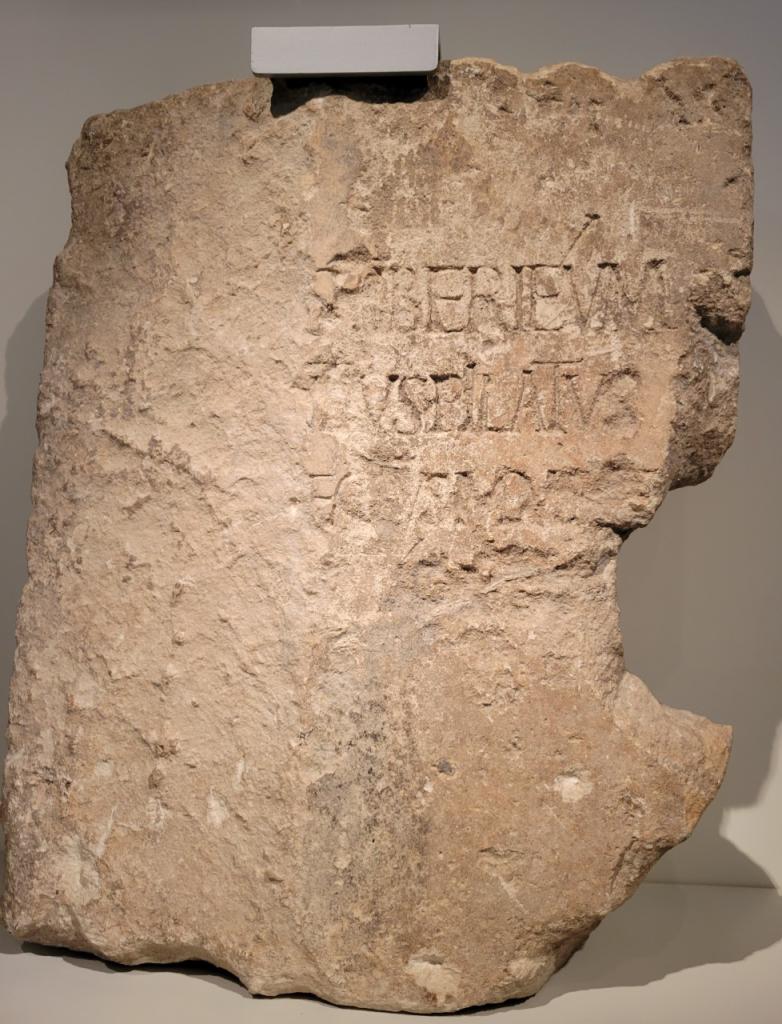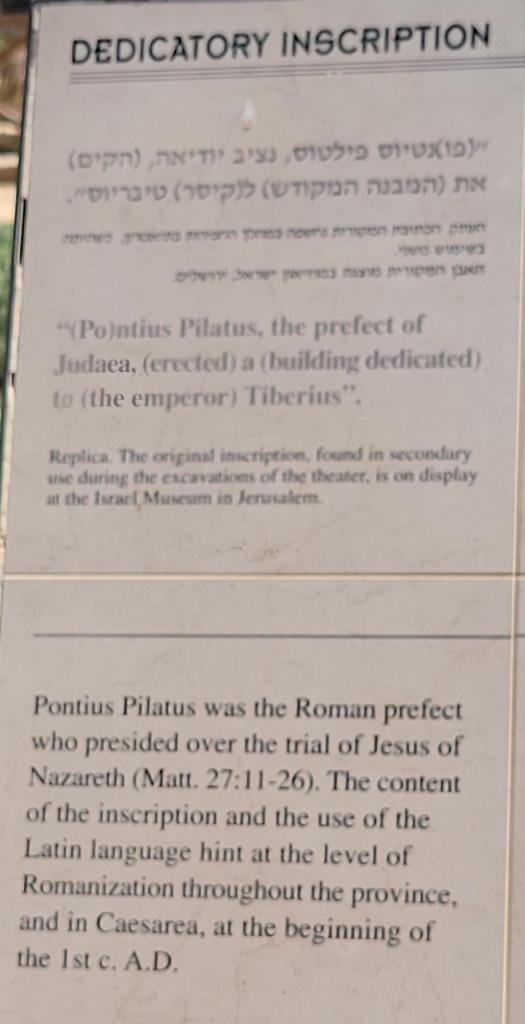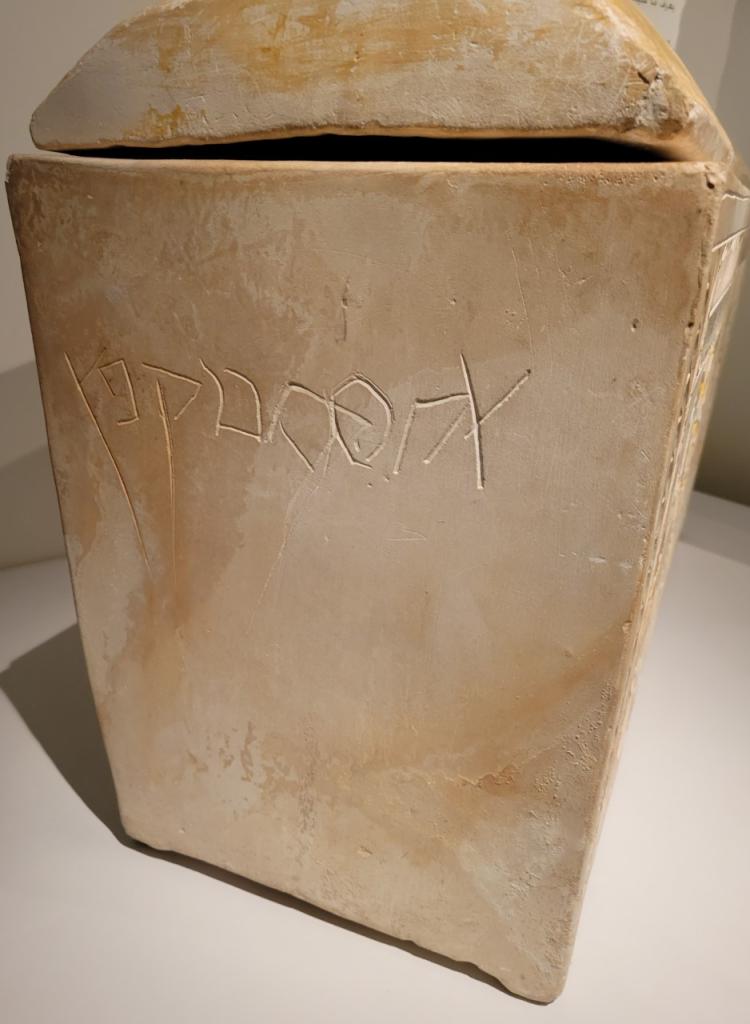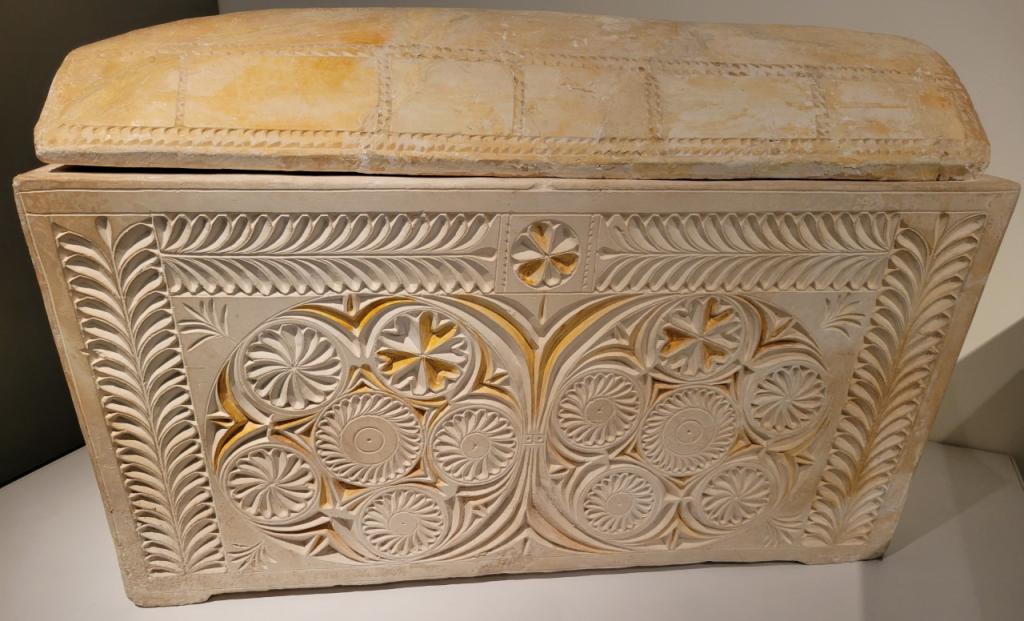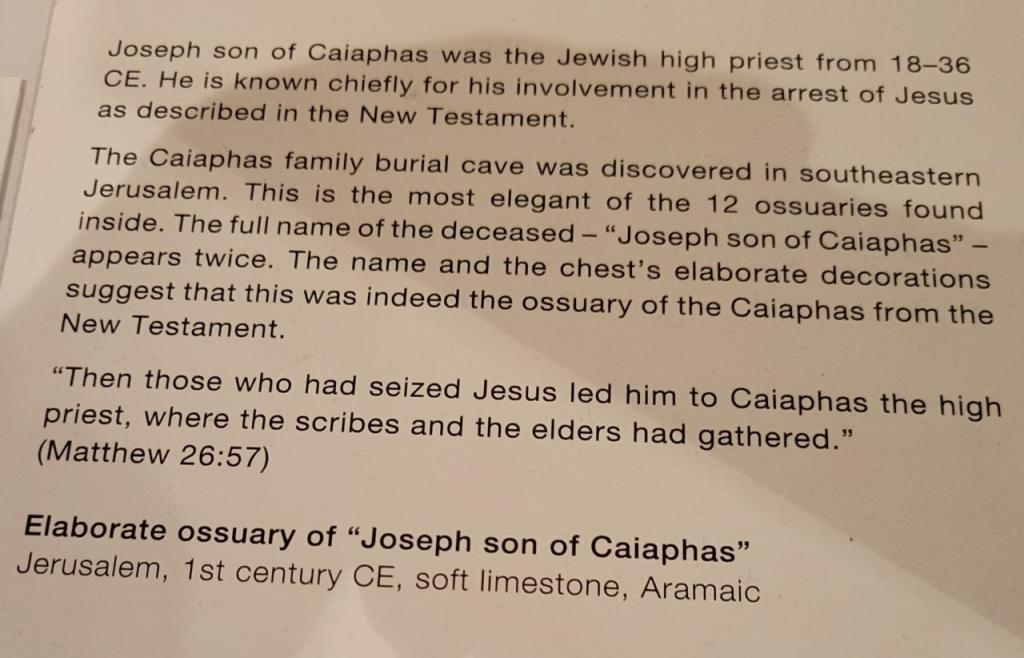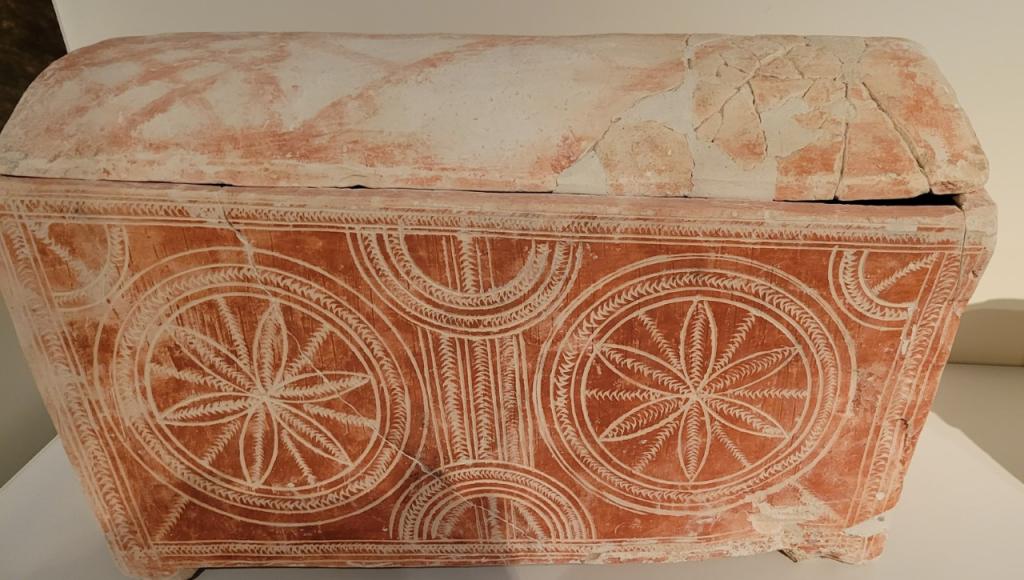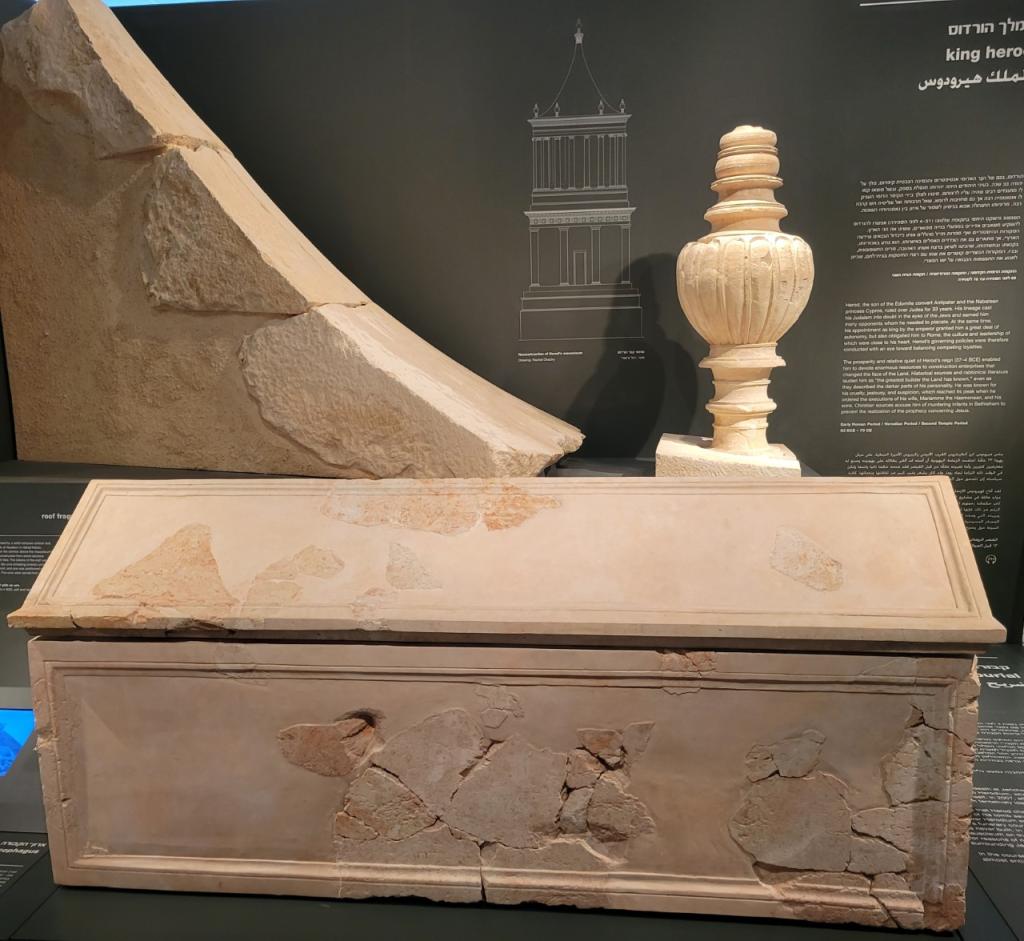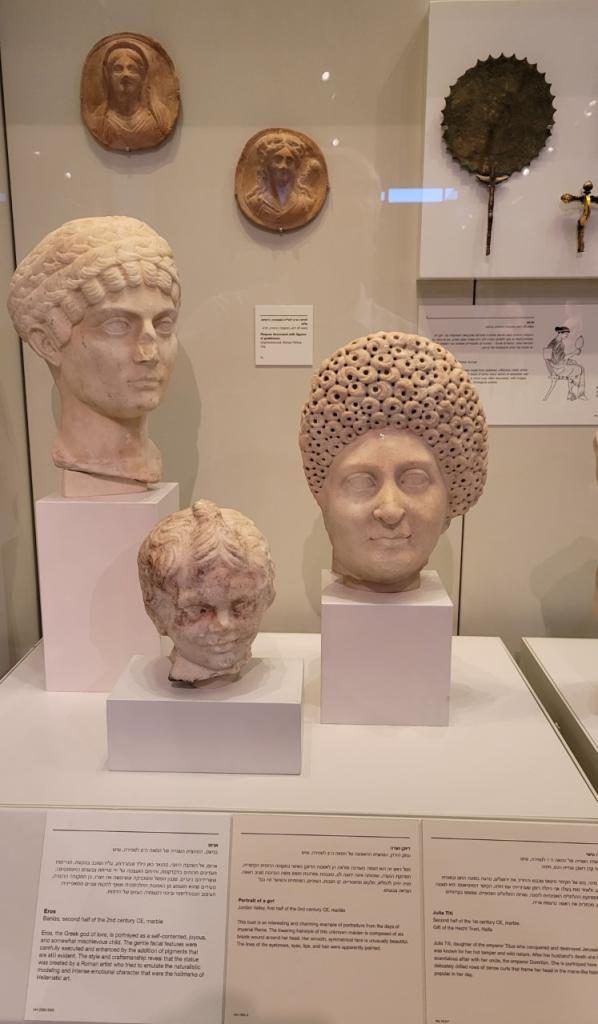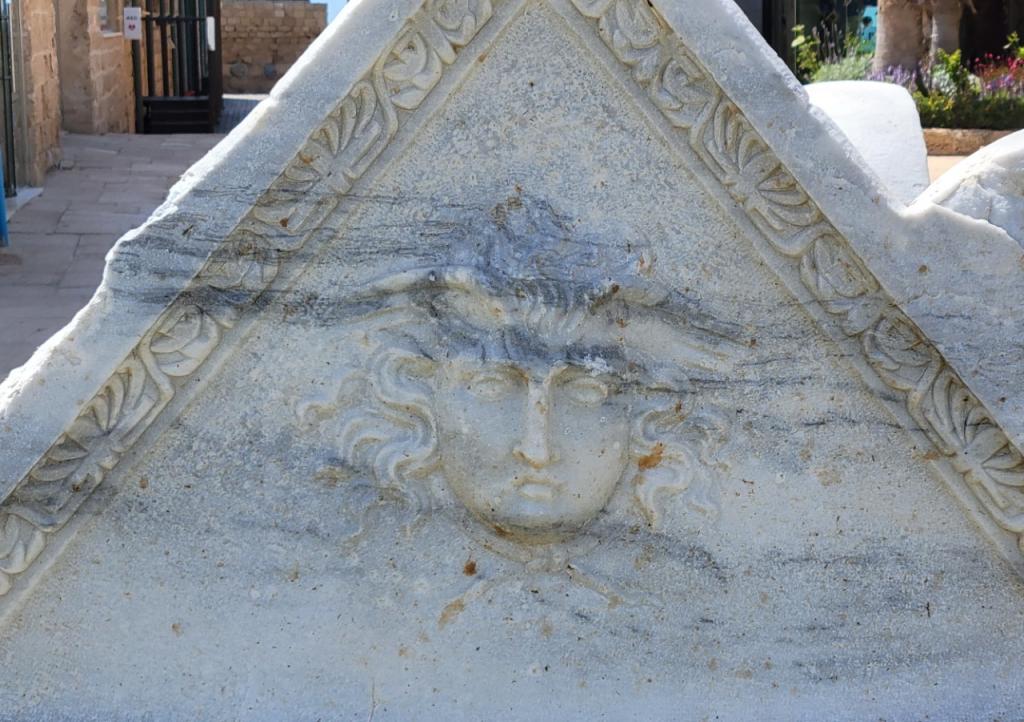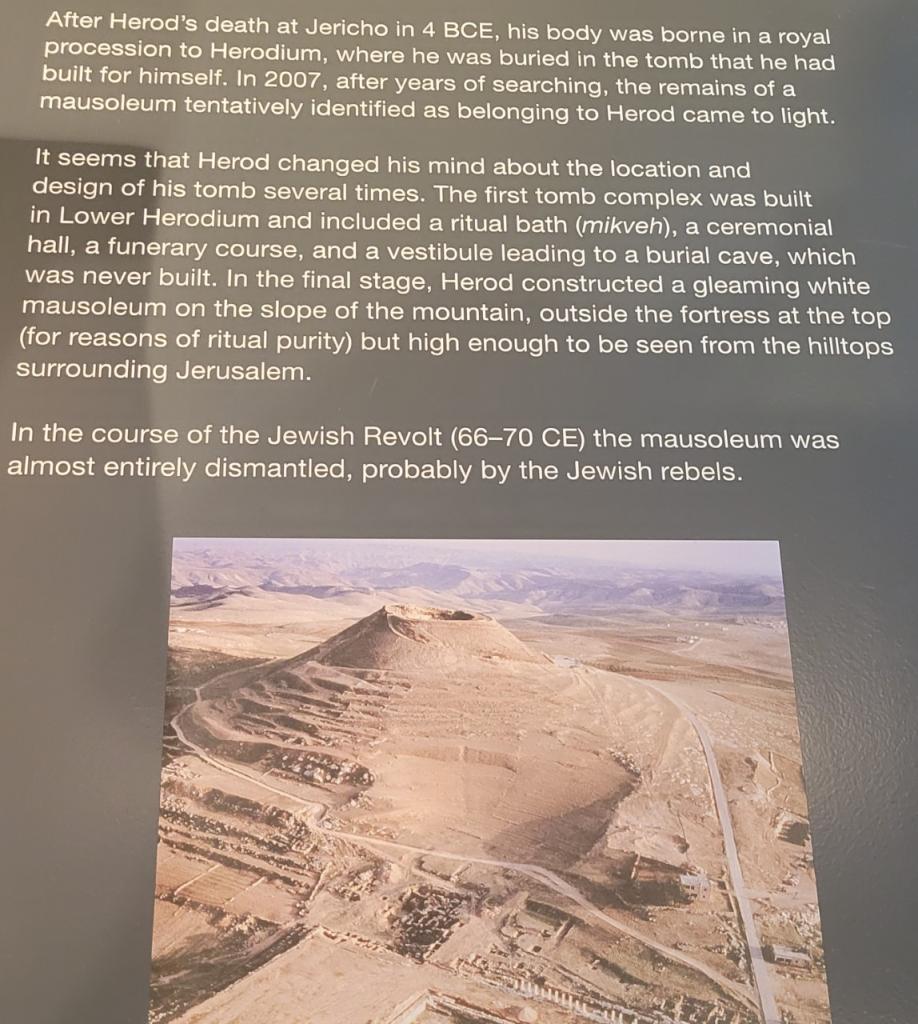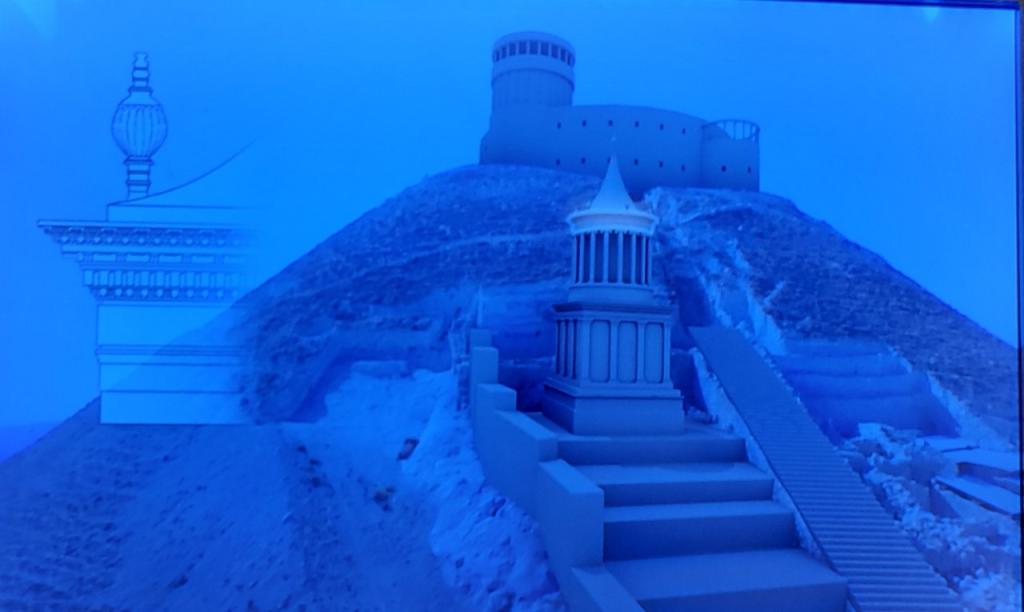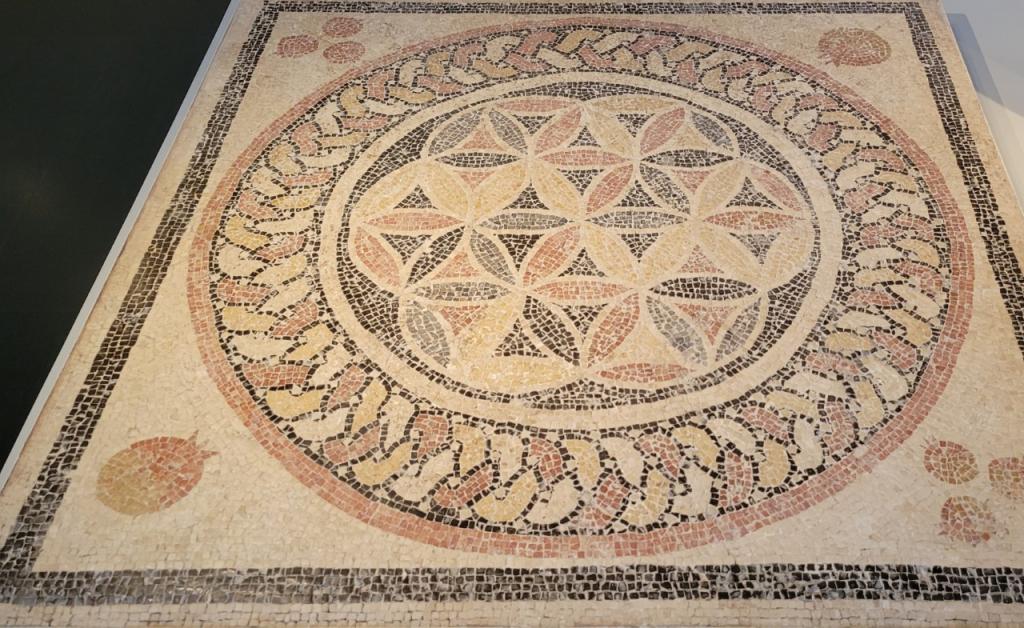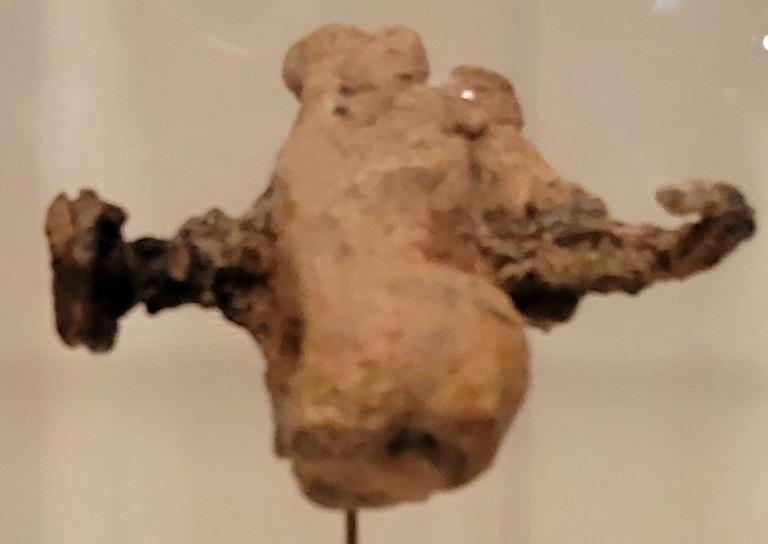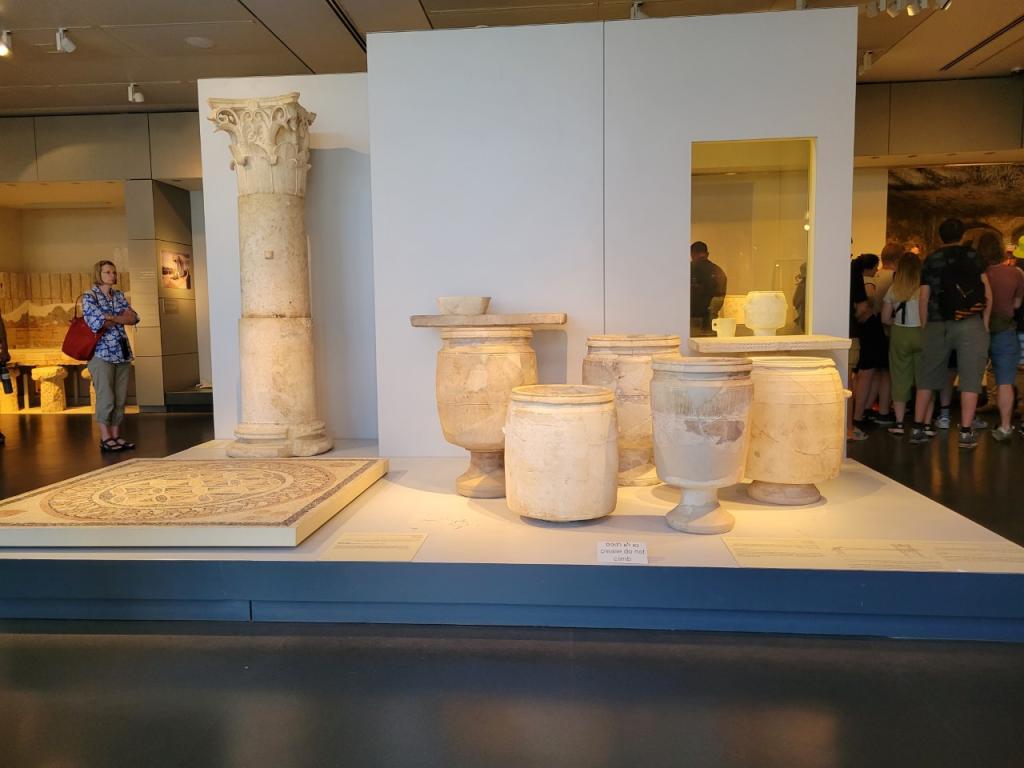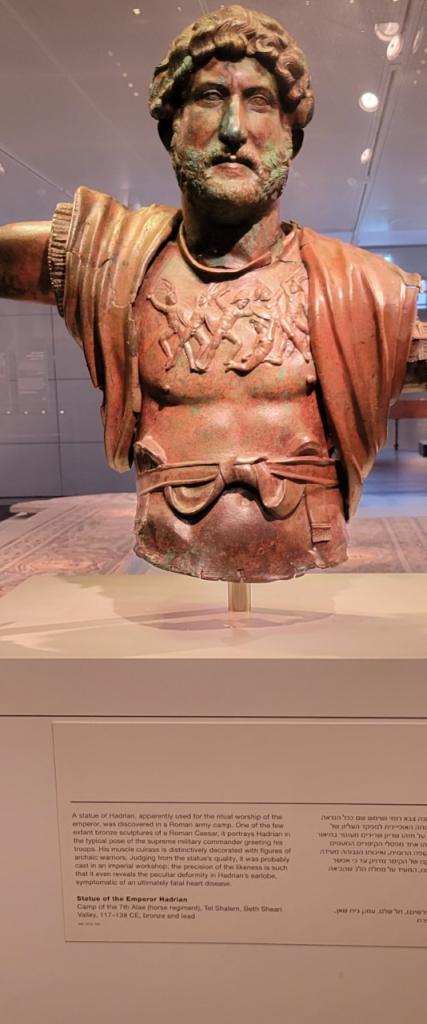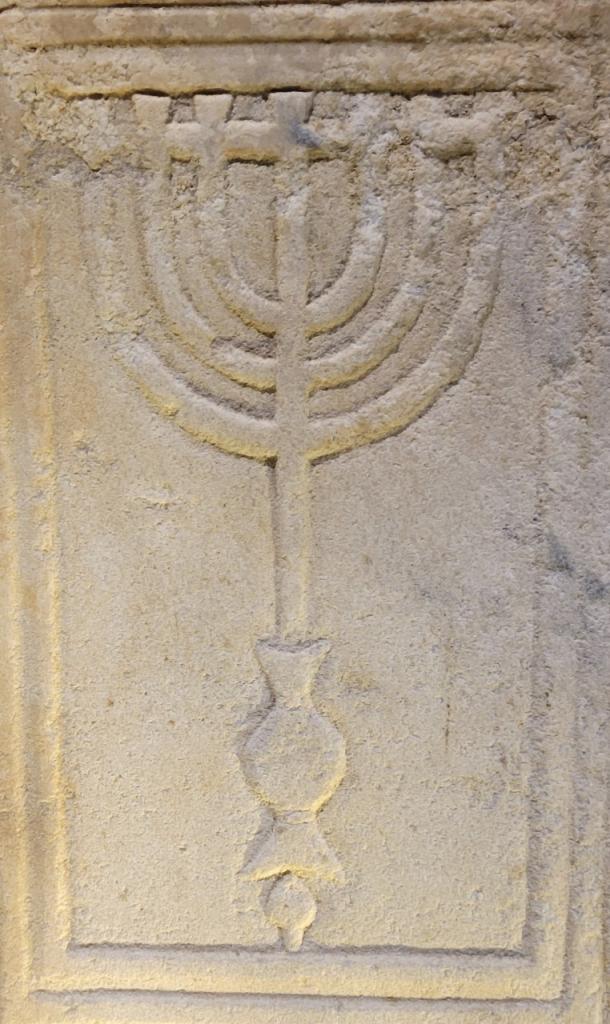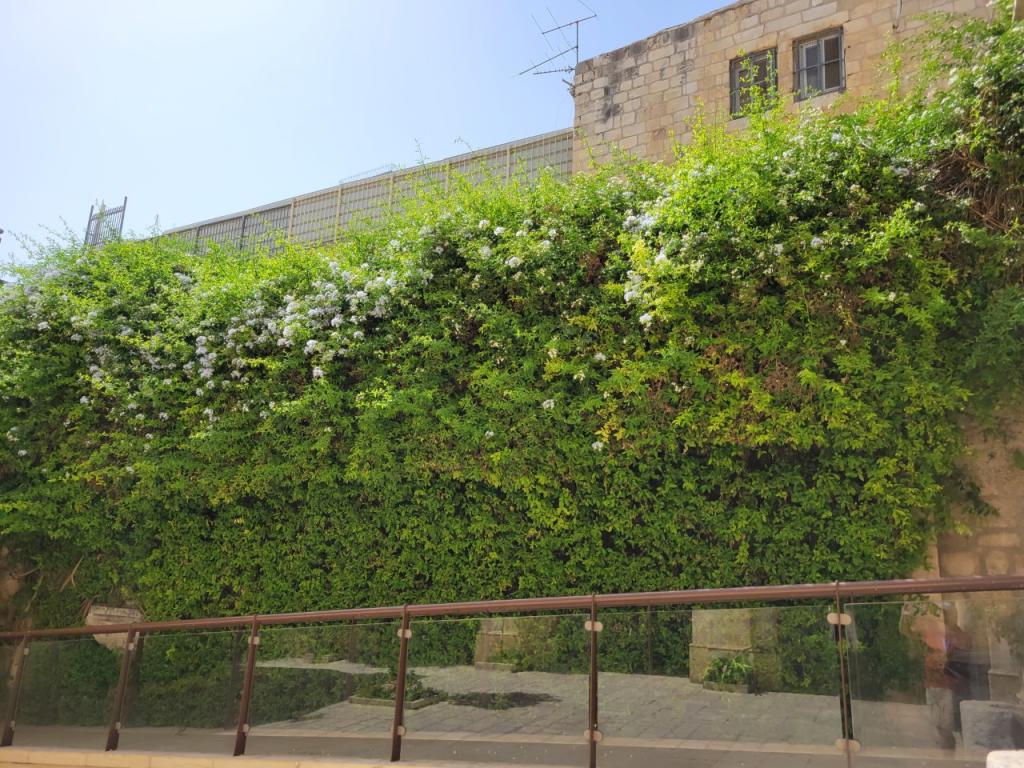It had been a very long time since I had been in the Israeli Antiquities Museum. And we had to race through it, so I had to concentrate on just the relevant materials from the NT period.
Here is the actual famous Pilate inscription stone from Caesarea Maritima.
There are lots of interesting and famous ossuaries or bone boxes in this museum including Caiaphas’ ornate one. What is interesting about it is not just its style and beauty but that it has a scrawl of an ID on the end of the box making clear who it belonged to. Ossuaries were placed in niches and the ID is so the person who maintained the tomb would know who was in what slot. This is a contrast to the honorific inscription on the front of the James ossuary which reads Jacob, son of Yosef, his brother was Jesus. For the record, I’m still convinced, as are the original epigraphic experts that this was indeed James the brother of Jesus’ burial box, used in 62 A.D. when he was martyred (see the 2nd edition of the book I did with Hershel Shanks entitled The Brother of Jesus). The only other such honorific inscription that goes beyond the patronymic of X son of W, is on the ossuary of the brother of Hanina ben Dosa, the other most famous teacher of the era. What makes the James ossuary exceptional, is that in an honor and shame culture, you don’t brag about being related to someone who was crucified, the most shameful way to die. Unless of course… there was a reversal after that death.
Here is another very interesting ossuary….
There are other ornate ossuaries to be seen, most with some sort of decoration, usually rosettes like this one. 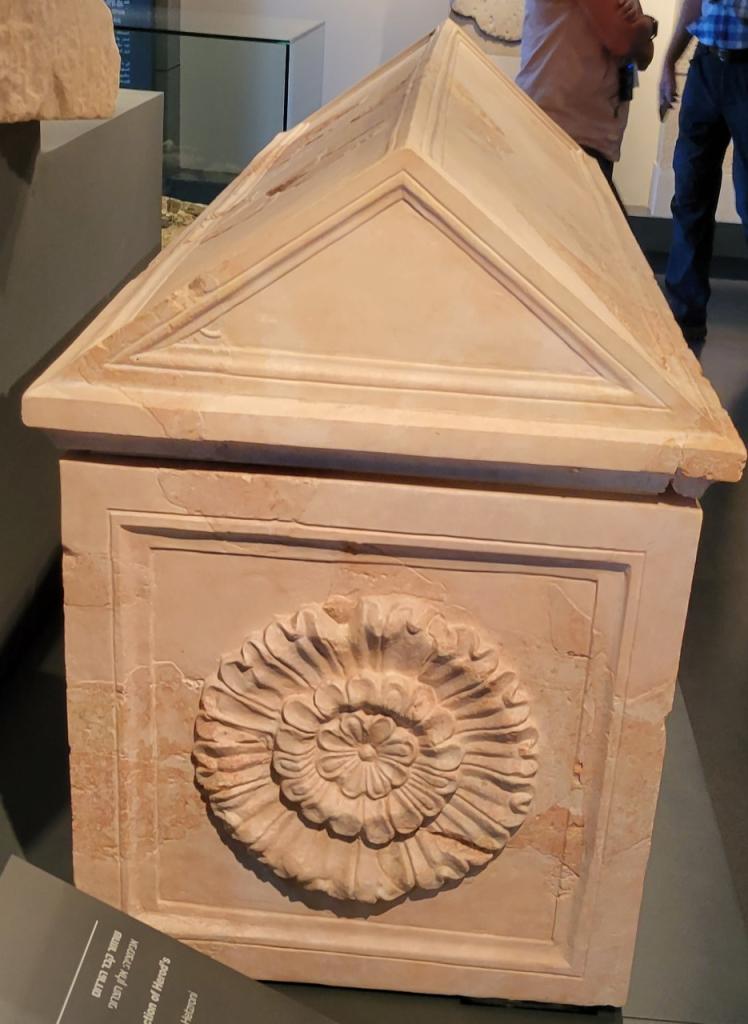
The practice of collecting the bones after the flesh had dessicated and preserving them in bone boxes only transpired during a period when there was a strong belief in the bodily resurrection as the means of afterlife, which is to say between the 2nd century B.C. and 2nd century A.D.
The Theodotus inscription is important on several accounts, not the least of which is it is the earliest known inscription about a synagogue, and reads….
“Theodotos son of Vettenus, priest and head of the synagogue (archisynágōgos), son of a head of the synagogue, and grandson of a head of the synagogue, built the synagogue for the reading of the law and for the teaching of the commandments, as well as the guest room, the chambers, and the water fittings as an inn for those in need from abroad, the synagogue which his fathers founded with the elders and Simonides.”
How about those stylish hair styles?
These are water and/or wine jars, the sort the wedding feast at Cana mentions. The water was not for drinking but for purification rituals.
Below is a portion of the famous warning sign that was placed outside the court of the men in the temple precincts in Jerusalem which warned—
‘No foreigner shall enter within the forecourt and the balustrade around the sanctuary. Whoever is caught will have himself to blame for his subsequent death.’
Notice that this inscription is in Greek. It is precisely this warning which helped set off the riot in the temple when Paul was accused of taking a Gentile into the forbidden zone, which actually he didn’t do.
This impressive statue of the Emperor Hadrian (of the wall fame) below was found at Scythopolis/Beth Shean, the only city of the Decapolis within the boundaries of the holy land.


